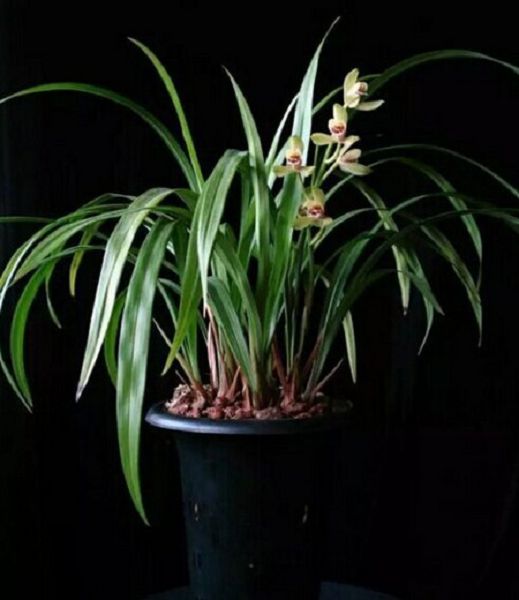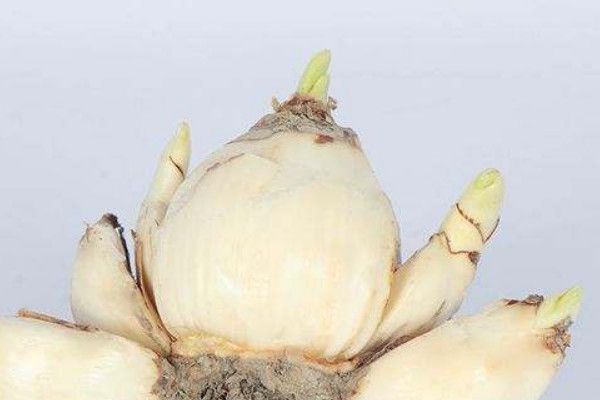The fertilization method of sword orchid?

The sword orchid, also known as Gladiolus, which is known as the leader of cut flowers, can also be used as a place for cut flowers, it can also be used for potted plants and flower beds, and so on. Recently, many netizens have consulted the fertilization method of Xiaobian sword orchid, so how to apply fertilizer? To put it simply, before planting, the soil applies enough base fertilizer, and the type of base fertilizer is rich in phosphorus and potassium fertilizer. Apply rarefied organic fertilizer before and after flowering and apply more potash fertilizer after flowering to promote the growth of globules. The specific fertilization methods of sword orchid are introduced below:
Sword orchids like fertile soil, but they should not fertilize too much. Multiple fertilization can be carried out in the growth process of sword orchid, which can be divided into base fertilizer before planting and three times of topdressing in the critical period of growth. The base fertilizer is mainly organic fertilizer, fully mature organic fertilizer can improve the physical and chemical properties of soil, adjust soil structure, make soil loose, improve water and water retention, and promote the good growth of root system. What is more advantageous is the slow release and long-term effect of organic fertilizer, which can provide nutrient supply for the whole growth cycle of the plant. Some quick-acting chemical fertilizers can be used in the application of base fertilizer, but it should not be applied more.
Fertilization should be carried out according to the specific conditions such as cultivation type and purpose, soil type and fertility, total soil salt content, plant growing stage and so on. As the sword orchid is sensitive to the contents of soil salt, fluorine and chlorine, attention should be paid to the selection of fertilizers. Try to reduce the use of triphosphate (easy to contain high concentration of fluorine), and replace with other phosphate fertilizer, can effectively avoid leaf tip scorch. Topdressing can be carried out by the combination of root fertilization and foliar fertilization, and combined with irrigation to give full play to the fertilizer effect. The chemical fertilizers that can be used for topdressing are: ammonium nitrate, potassium nitrate, calcium superphosphate, potassium dihydrogen phosphate, ammonium sulfate, potassium sulfate, urea, etc., and try to use less potassium chloride and fluorine-containing phosphate fertilizer.
The suitable time and type of fertilization are determined according to its growth and development characteristics. For the first time, after the two leaves of the plant were unfolded, the fertilizer was mainly nitrogen and potassium fertilizer, which was the period of floret differentiation, and the nutrients of the original planted corms had been consumed massively, and when the fertilizer and water were insufficient, the number of florets in inflorescences would be reduced, affecting the commercial value of fresh cut flowers. The second time after the 4-leaf stage, the flower stem began to elongate gradually, the development of a single floret was accelerated, and the fertilizer was mainly phosphorus and potassium fertilizer, in order to promote the sturdy flower branches, make the flowers big and colorful, and have a long life in vase after cutting. The third time after flowering, it is the period of growth and development of new bulbs and bulbs, and a lot of nutrients are needed to promote the development and enrichment of new corms. The fullness of bulbs and the number of bulbs will have a great impact on the production and expansion of cut flowers in the coming year, and the fertilizer is mainly phosphorus and potash fertilizer.
During the whole growing period, the sword orchid should be fertilized twice. The fertilizer should be based on phosphate fertilizer and supplemented by nitrogen fertilizer. For the first time, the content of nitrogen, phosphorus and potassium per mu was 15% and 40 kg each after the two leaves were unfoliated to promote the growth of nutrients; the second time, 25 kg of compound fertilizer and 5 kg of potash fertilizer were applied per mu at the 4-leaf stage (flower bud differentiation stage) to promote the stout growth of flower stems. Pay attention to fertilizing must dissolve the compound fertilizer with water and then pour it into water and fertilizer. After growing to 5 leaves, 1% potassium dihydrogen phosphate solution or new branchins can be used as extra-root topdressing every 5-7 days. In addition, 25 kg lime powder per mu at 4-leaf stage was used to neutralize soil acidity and reduce the occurrence of diseases in the later stage.
Note:
Organic fertilizer, commonly known as farm manure, mainly uses the supply of organic matter as a means to improve soil physical and chemical properties, promote plant growth and the cycle of soil ecosystem. Some varieties of organic fertilizers in a broad sense:
Composting: a kind of fertilizer made from all kinds of orange stalks, fallen leaves, grass, animal and plant residues, human and animal manure as raw materials, mixed with each other in proportion or mixed with a small amount of soil for aerobic fermentation.
Retting manure: the raw materials used in retting compost are basically the same as compost, but they are fermented under flooded conditions.
Biogas fertilizer: in a sealed biogas digester, the by-products of decomposition of organic matter to produce biogas, including biogas liquid and residue.
Green manure: use cultivated or wild green plants as fertilizer. Such as mung bean, broad bean, sweet clover, sesbania, alfalfa, vetch and so on. Non-leguminous green manure includes ryegrass, radish, sunflower seed, Manjianghong, water hyacinth, water peanut and so on.
Crop straw: crop straw is one of the important fertilizer varieties. Crop straw contains n, p, k, ca, s and so on.
Under suitable conditions, through the role of soil microorganisms, these elements are mineralized and then returned to the soil to be absorbed and utilized by crops.
Pure natural mineral fertilizer, including potassium rock powder, phosphate rock powder, calcium chloride, natural potassium sulfate magnesium fertilizer and other natural substances that have not been chemically processed. Such products must pass organic certification and be produced in strict accordance with organic standards before they can be used in organic agriculture.
Cake fertilizer: rapeseed cake, cottonseed cake, bean cake, sesame cake, castor cake, tea seed cake and so on.
Mud fertilizer: unpolluted river mud, pond mud, ditch mud, port mud, lake mud, etc.
Related
- Fuxing push coffee new agricultural production and marketing class: lack of small-scale processing plants
- Jujube rice field leisure farm deep ploughing Yilan for five years to create a space for organic food and play
- Nongyu Farm-A trial of organic papaya for brave women with advanced technology
- Four points for attention in the prevention and control of diseases and insect pests of edible fungi
- How to add nutrient solution to Edible Fungi
- Is there any good way to control edible fungus mites?
- Open Inoculation Technology of Edible Fungi
- Is there any clever way to use fertilizer for edible fungus in winter?
- What agents are used to kill the pathogens of edible fungi in the mushroom shed?
- Rapid drying of Edible Fungi



